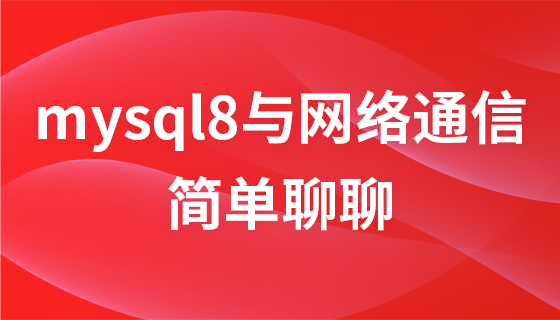在Golang中如何将 void* 转换为特定类型
来源:stackoverflow
时间:2024-03-15 23:06:31 414浏览 收藏
在 Go 语言中,无法直接将 void* 转换为特定类型,因为 Go 语言的内存模型与 C++ 不同。在 C++ 中,可以利用 reinterpret_cast 将 void* 重新解释为其他类型,但在 Go 中,这种操作是不安全的,因为 Go 语言没有定义结构体的内存模型,并且它可能会在不同的 Go 版本之间发生变化。 因此,在 Go 中处理二进制编码的推荐方法是使用 encoding/binary 包,该包可以将二进制数据直接解码为固定大小的结构体。这种方法既安全又高效,因为它不需要直接操作内存,并且可以确保数据在不同的平台上以一致的方式进行解码。
在 c++ 中,您可以从 file 描述符读取数据,然后简单地将其重新解释到结构中以解释数据。
go 中有等效的方法吗?
作为一个非常人为的示例,请考虑以下内容,其中“processbytes”只是一个回调,其中为您提供了一个在从文件读取时连续附加的字节数组。
struct PayloadHeader {
uint32_t TotalPayloadLength;
uint8_t PayloadType;
};
struct TextMessage {
PayloadHeader Header;
uint32_t SenderId;
uint32_t RecieverId;
char Text[64]; // null padded
};
void ProcessBytes(const uint8_t* data, size_t dataLength) {
if(dataLength < sizeof(PayloadHeader))
return;
const PayloadHeader* header = reinterpret_cast<const PayloadHeader*>(data);
if(header.PayloadType == TEXT_MESSAGE) {
if(header.TotalLength != sizeof(TextMessage))
return;
const TextMessage* text = reinterpret_cast<const TextMessage*>(data);
// Do something with the text message~
// Adjust the *data* to 'erase' the bytes after we are done processing it
// as a TextMessage
}
}解决方案
现在的答案建议使用 unsafe,但它们并没有讨论为什么你不应该使用 unsafe 以及你应该做什么。那我就来试试吧。
在您在 op 中发布的 c++ 代码中,您似乎正在编写一种二进制格式,它通过简单的转换读取数据。简单,但有效。我看到的唯一明显的问题是它不允许 little endian 和 big endian 之间的互操作性,但这是另一回事。
在 go 中处理二进制编码的方法是使用方便的包 encoding/binary,它能够将二进制数据直接解码为固定大小的结构(即没有字符串或切片,它们是可变长度的)因此长度需要任意编码)。
以下是我在 go 中实现您的示例的方法:
package main
import (
"bytes"
"encoding/binary"
"fmt"
)
const textmessage = 11
func main() {
// set up our data - this is an example of the data i
// imagine you want to decode.
r := bytes.newreader([]byte{
// header
byte(textmessagelen + headerlen), 0, 0, 0,
11,
// body
137, 0, 0, 0,
117, 0, 0, 0,
// message content
'h', 'e', 'l', 'l', 'o', '!', 0, 0,
0, 0, 0, 0, 0, 0, 0, 0,
0, 0, 0, 0, 0, 0, 0, 0,
0, 0, 0, 0, 0, 0, 0, 0,
0, 0, 0, 0, 0, 0, 0, 0,
0, 0, 0, 0, 0, 0, 0, 0,
0, 0, 0, 0, 0, 0, 0, 0,
0, 0, 0, 0, 0, 0, 0, 0,
})
// we first read the header to decide what to do next.
// notice that we explicitly pass an argument that indicates to
// parse integers using little endian, making this code portable.
var h header
err := binary.read(r, binary.littleendian, &h)
if err != nil {
fmt.println(err)
return
}
switch h.type {
case textmessage:
// it's a text message - make sure the length is right.
if textmessagelen != (int(h.length) - headerlen) {
fmt.println("invalid payload length")
return
}
// decode the data
var t textmessage
err = binary.read(r, binary.littleendian, &t)
if err != nil {
fmt.println(err)
return
}
// print it out
fmt.printf("sender: %d; receiver: %d\nmessage: %s\n",
t.sender, t.receiver, bytes.trimright(t.text[:], "\x00"))
default:
fmt.println("unknown payload type")
}
}
// if you need to find out what the encoded size of a struct is, don't use unsafe.sizeof;
// use binary.size instead.
var headerlen = binary.size(header{})
type header struct {
length uint32
type uint8
}
var textmessagelen = binary.size(textmessage{})
type textmessage struct {
sender, receiver uint32
text [64]byte
}
所以,这里有一些注意事项:
- 在 go 中,二进制格式通常不会直接从内存中读取。这是因为 1. 它依赖于平台(小/大端),2. 字符串、切片和结构填充存在问题,3. 它是不安全的。如果你不直接篡改内存,go几乎可以保证你的程序无需任何修改就能在任何平台上流畅运行。一旦你开始这样做,你就失去了这种保证。
- 我们不需要“提前”正在读取的数据的指针 - 我们将向下传递给
binary.read和io.reader,这意味着当我们从中读取某些内容时,读取的数据将被丢弃,因此指针会自动前进。 - 当你自己玩内存时,gc 可能会产生影响 - gc 可能认为数据中的某个点不再被引用并且可以自由使用 - 而实际上你仍在使用它,只是没有明确引用使用原生 go 指针。
你可以,但你不应该这样做,因为它不安全。 golang没有定义struct的内存模型(据我所知),它可能在golang版本之间发生变化。编组/解组是常规方法。
package main
import (
"fmt"
"unsafe"
)
type mys struct{
a int
}
func main() {
v := mys{0x1234abcd}
unsafeArrayP := (*[unsafe.Sizeof(v)]byte)(unsafe.Pointer(&v))
for i:=0;i<4;i++ {
fmt.Printf("%x,", unsafeArrayP[i])
}
v2 := 0x1234abcd
v3 := *((*mys)(unsafe.Pointer(&v2)))
fmt.Println(v == v3)
}
打印 cd,ab,34,12,true
以上就是《在Golang中如何将 void* 转换为特定类型》的详细内容,更多关于的资料请关注golang学习网公众号!
-
502 收藏
-
502 收藏
-
501 收藏
-
501 收藏
-
501 收藏
-
139 收藏
-
204 收藏
-
325 收藏
-
478 收藏
-
486 收藏
-
439 收藏
-
357 收藏
-
352 收藏
-
101 收藏
-
440 收藏
-
212 收藏
-
143 收藏
-

- 前端进阶之JavaScript设计模式
- 设计模式是开发人员在软件开发过程中面临一般问题时的解决方案,代表了最佳的实践。本课程的主打内容包括JS常见设计模式以及具体应用场景,打造一站式知识长龙服务,适合有JS基础的同学学习。
- 立即学习 543次学习
-

- GO语言核心编程课程
- 本课程采用真实案例,全面具体可落地,从理论到实践,一步一步将GO核心编程技术、编程思想、底层实现融会贯通,使学习者贴近时代脉搏,做IT互联网时代的弄潮儿。
- 立即学习 516次学习
-

- 简单聊聊mysql8与网络通信
- 如有问题加微信:Le-studyg;在课程中,我们将首先介绍MySQL8的新特性,包括性能优化、安全增强、新数据类型等,帮助学生快速熟悉MySQL8的最新功能。接着,我们将深入解析MySQL的网络通信机制,包括协议、连接管理、数据传输等,让
- 立即学习 500次学习
-

- JavaScript正则表达式基础与实战
- 在任何一门编程语言中,正则表达式,都是一项重要的知识,它提供了高效的字符串匹配与捕获机制,可以极大的简化程序设计。
- 立即学习 487次学习
-

- 从零制作响应式网站—Grid布局
- 本系列教程将展示从零制作一个假想的网络科技公司官网,分为导航,轮播,关于我们,成功案例,服务流程,团队介绍,数据部分,公司动态,底部信息等内容区块。网站整体采用CSSGrid布局,支持响应式,有流畅过渡和展现动画。
- 立即学习 485次学习
